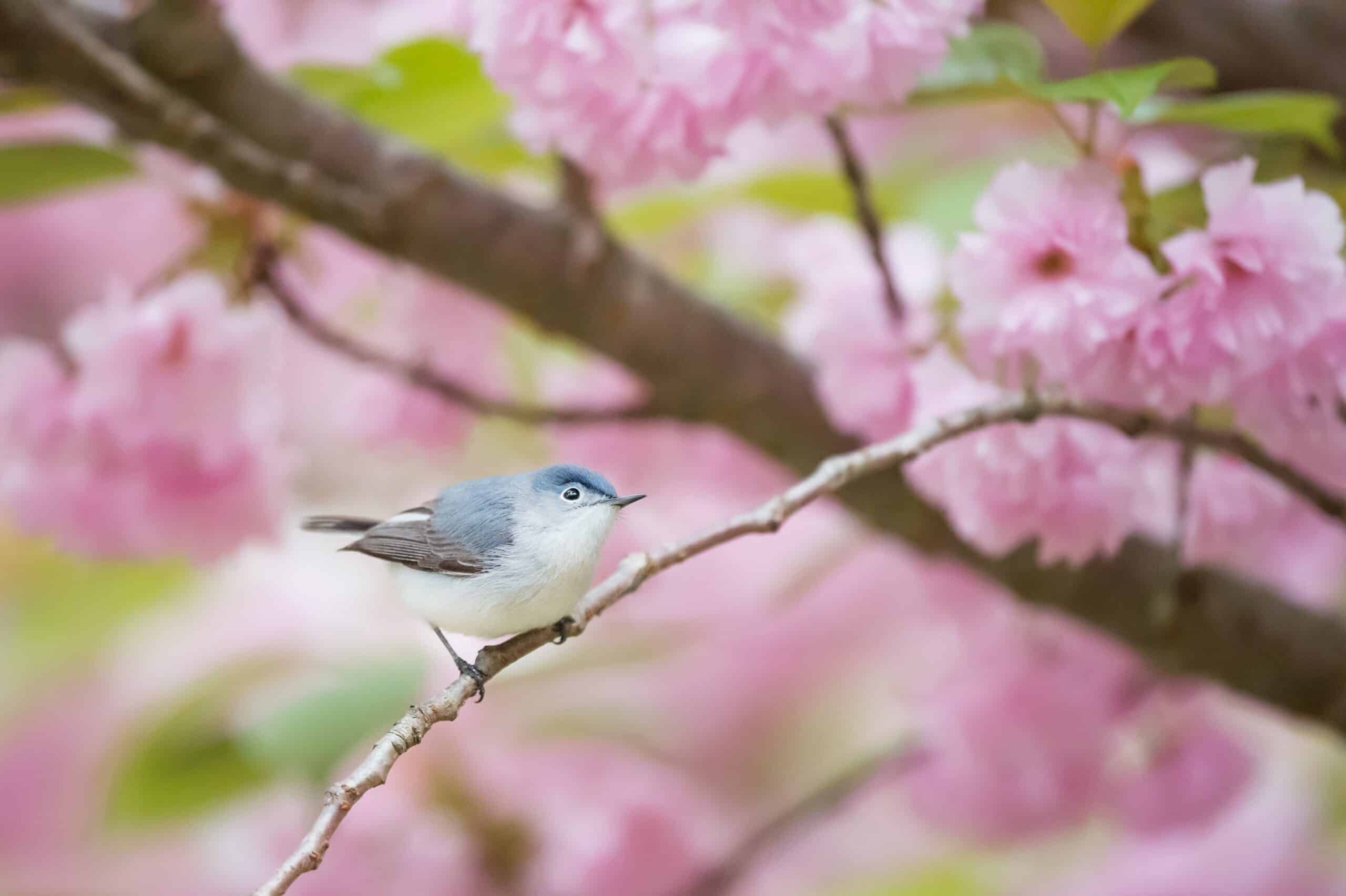Have you ever been captivated by the vibrant, red hue of a cardinal flower? It is as if the flower radiates a passionate energy that brings to life whatever space it inhabits. Coincidentally, this flower shares the same name with one of nature’s most beautiful birds. The cardinal flower, also known as Lobelia cardinalis, is an eye-catching perennial native to much of North America and parts of Central America.
For any botany enthusiast or gardener looking to add some color and vibrancy to their garden, the cardinal flower is an excellent choice. Not only is it easy to care for and maintain, but it also serves as a great way to attract beneficial pollinators such as butterflies and hummingbirds. This article will provide detailed instructions on how to successfully grow and care for cardinal flowers in your own garden.
Finally, by growing this species of plant you can help conserve its natural habitat while also helping others in your community who may not have access to these beautiful flowers due to their local climate or soil conditions. With this guide, you can start your own journey towards growing a gorgeous garden that benefits both wildlife and people alike.
Planting Cardinal Flowers
Planting cardinal flowers is the first step in cultivating these beautiful plants. Before planting, it’s important to choose a location that will provide plenty of sunshine and well-draining soil. Cardinal flowers can also be grown in containers, which may be necessary if you live in an area with cold winters. Make sure the container is large enough for the plant to reach its full size and has drainage holes. When it comes to soil, choose a potting mix that contains peat moss or compost as this will help retain moisture and give the roots plenty of nutrients.
Once you’ve chosen your planting location, it’s time to prepare the soil. Loosen the ground by digging down about 7-10 inches and adding some organic matter such as compost or manure. This will help ensure that your plant gets all of the nutrients it needs for robust growth. Be sure to rake out any rocks or debris before planting your cardinal flower as this can damage delicate roots and stunt growth.
Finally, it’s time to put your cardinal flower into its new home! Dig a hole slightly larger than the root ball and gently place your plant inside, being careful not to damage any of its roots. Fill in around the plant with soil and water thoroughly until fully saturated. With proper care, your new cardinal flower should perk up after a few days and begin producing beautiful blooms soon afterwards! Now that we have taken care of planting our cardinal flower, let’s move on to discussing its soil requirements…
Cardinal Flower Soil Requirements
Like a bee to its hive, soil is the cornerstone of any successful garden. Ensuring that cardinal flower plants have the right type of soil can make or break their success. This makes it essential for those looking to grow these gorgeous blossoms to understand the soil requirements for optimal growth.
The ideal soil for cardinal flowers is loamy; rich in organic matter, with good drainage and a slightly acidic pH level (5.5-6.5). To help achieve this, gardeners should add compost or peat moss before planting to increase aeration and nutrient levels in the soil while helping retain moisture without waterlogging the roots. Mulching around newly planted areas also helps lock in moisture and keeps weeds at bay.
In addition, incorporating fertilizers into the soil prior to planting can help provide additional nutrition throughout the growing season. When watering, it’s important not to overwater as that can lead to root rot–moderate watering is key for healthy growth. Taking these steps will ensure that your cardinal flowers are well provided with their basic needs and ready to thrive in your garden!
Cardinal Flower Sun Requirements
It is important to note that when growing cardinal flowers, the sun requirements must be met in order for your plants to thrive. Cardinal flowers love full sun to partial shade, although they will tolerate more shade if needed. They require at least 6 hours of direct sunlight per day and should be planted in an area that receives plenty of direct sunlight during the day.
When planting cardinal flowers, it is best to choose an area that receives some morning or late afternoon shade as too much direct sunlight can cause the plants to become overly stressed and suffer from heat damage. As long as you provide adequate moisture and nutrients, your cardinal flowers should do well in areas with partial shade or dappled sunlight during the hottest part of the day.
In addition, it is important to keep in mind that cardinal flowers need protection from strong winds which can dry out the soil and damage their fragile petals. If planting outdoors, make sure to place them on a sheltered spot where they are protected from strong winds and have access to plenty of sunshine throughout the day.
Now that we have discussed the ideal sun requirements for growing cardinal flowers, let’s move on to watering these vibrant plants.
Watering Cardinal Flowers
Cardinal flowers, which are native to North America, are an excellent addition to any garden. They provide a stunning visual effect with their bright red color, and they can be used in a variety of ways – from cut flowers for bouquets to providing nectar for pollinators. Here’s an interesting fact: the genus name for cardinal flower (Lobelia) comes from the seventeenth-century botanist Mathias de Lobel. Impressive! Now let’s take a look at watering requirements for cardinal flower.
When caring for cardinal flower, it’s important to provide adequate water. This species is quite forgiving with regard to how much moisture they require; however, they will thrive best if watered two or three times per week during periods of drought or hot temperatures. If you’re growing them in containers, make sure the soil is consistently moist but not soggy – this will help prevent root rot and other issues associated with overly wet soil. When watering your plants, use lukewarm water and avoid overhead sprinklers, as these can damage the flowers’ delicate petals.
Cardinal flower prefers slightly acidic soils with good drainage – so if you have clay soil in your garden bed, consider adding some extra compost or mulch to help improve drainage and aeration before planting your flowers. Additionally, be sure to adjust your watering schedule based on seasonal changes; for instance, during the summer months you may need to water more frequently than in winter months when rain is more abundant.
By following these simple tips on watering cardinal flowers correctly, you can ensure that your plants stay healthy and vibrant year-round!
Fertilizing Cardinal Flowers
Fertilizing cardinal flowers can be compared to feeding a beneficial nutrient-rich meal to your beloved pet. It is a simple task that will provide them with the sustenance they need to thrive and reach their full potential. As an experienced botanist or gardener, you know that these plants require specialized attention and care when it comes to fertilizers.
When providing fertilizer for your cardinal flower, make sure to choose one specifically designed for blooming plants such as this one. This type of fertilizer should contain an even balance of nitrogen, phosphorus, and potassium (also known as NPK). Additionally, other trace elements are beneficial for optimal growth. Apply the fertilizer according to the instructions on the package and be sure not to over-fertilize as this can damage the plant’s roots and stunt its growth.
Finally, monitor your plant’s progress regularly in order to determine if additional fertilizer is needed. If you notice any signs of nutrient deficiencies such as yellowing leaves or poor flowering, supplement with a balanced liquid fertilizer formulated for blooming plants every few weeks until your cardinal flower is thriving again. With proper care and attention, your cardinal flower will reward you with vibrant blooms throughout the summer season!
Propagating Cardinal Flowers
Propagating cardinal flowers is an excellent way to expand your garden and enjoy the beauty of these showy blooms. It’s not difficult, so let’s get started. Here are five easy steps to help you propagate your own cardinal flower plants:
- Start with healthy plants that have been in the ground for at least two years.
- Cut a 3-4 inch stem with several leaf nodes and place it in moist potting soil or vermiculite.
- Cover it lightly with soil and keep the soil humid but not wet.
- Keep the cuttings in indirect sunlight until they’ve developed roots, which should take about two weeks.
- Once the roots have formed, plant them into individual pots or trays filled with a well-draining potting mix.
You can also propagate cardinal flowers from seed. Collect the seeds from mature plants after flowering has finished and store them in a cool, dry place until you’re ready to sow them in late summer or early fall. Plant the seeds 1/8 inch deep in well-draining soil, then keep them moist but not wet until germination occurs, usually within 2-3 weeks. Transplant them into individual pots when they reach about 4 inches tall.
With these simple propagation techniques, you can create a lush display of vibrant red cardinal flowers for your garden! Now let’s look at how to ensure that these beautiful blooms thrive by pruning them properly…
Pruning Cardinal Flowers
Do you want to ensure your cardinal flowers are looking their best? Pruning is an important step in successfully growing and caring for them. It can help promote healthy growth and keep plants in top condition. As a specialist in botany and gardening, I’m here to offer advice on how to prune your cardinal flowers.
Pruning should be done after the plant has finished flowering. Cut the stem back halfway or slightly more than halfway to where it branches out from the main stem. This will encourage side branching, which will result in more and bigger blooms in future years. The same method applies for cutting out any dead or damaged stems too – just make sure not to cut into healthy tissue as this can lead to disease.
It’s also important to remove old seed heads as soon as possible after flowering so that energy isn’t wasted on producing seed rather than on growing new foliage and blooms. If you have a large number of plants, consider using a hedge trimmer to speed up the process; however, take care not to damage the stems while doing so.
TIP: Make sure you always use sharp and clean pruning shears or secateurs when pruning cardinal flowers – this will reduce stress on the branches and prevent disease spread from one plant to another.
Controlling Pests And Diseases
Cardinal flowers are incredibly resilient plants, but they are not immune to pests and diseases. According to the United States Department of Agriculture (USDA), an estimated 80 percent of all plants have some form of pest or disease that can affect them in one way or another. As a botanist and gardener, it is important to be aware of how to control these pests and diseases so that your cardinal flower blooms to its fullest potential.
The first step in controlling any pest or disease is identification. It is important to correctly identify the pest or disease before attempting any sort of treatment, as different pests and diseases require different treatments. Once you have identified the issue, you can then work on controlling it with the appropriate measures. For example, if the issue is aphids, you may need to use an insecticidal soap or neem oil for control. On the other hand, powdery mildew may require a solution of water and baking soda spray.
No matter what method you choose for pest and disease control, it is always best to take preventative measures whenever possible such as keeping your garden clean and free from debris, making sure your plants are not too crowded together, and avoiding over-watering or over-fertilizing your plants. By following these practices, you can help keep your cardinal flower healthy without having to resort to more drastic measures. With proper care and attention, this beautiful bloom will reward you with stunningly vibrant blooms season after season!
Harvesting And Storing Seeds
Harvesting and storing seeds is the final step in cultivating cardinal flowers. To ensure successful propagation, the timing of seed collection is critical. Seeds should be harvested at the peak of maturity; however, when collecting from a large patch, it is advisable to collect from a few plants over several days. This will help to prevent any premature disruption of the life cycle.
The harvested seeds need to be dried before storage in an airtight container. This will help to extend their viability for future planting. The ideal temperature for drying and storing is between 65-70°F (18-21°C). Furthermore, the seeds should be stored in a cool dark place away from moisture and direct sunlight. This can help to prolong their shelf life significantly.
Having successfully gathered and prepared your cardinal flower seeds, you are ready for overwintering them until the right time comes to sow them outdoors or indoors, depending on your climate zone. With careful tending and observance of optimal conditions, you can look forward to enjoying a healthy crop of vibrant blooms in no time!
Overwintering Cardinal Flowers
Overwintering cardinal flowers is a critical step in ensuring their continued growth and bloom year after year. By taking the time to prepare plants for winter, you will be rewarded with abundant blooms when they emerge the following spring. Here are some steps to help you overwinter your cardinal flower plants:
- Cut back the stems of the plant just after it has finished flowering. This will encourage new growth in the spring and also reduce any disease that may have affected the foliage over winter.
- Apply a layer of mulch around the base of the plants to protect them from extreme temperatures, frost and snow.
- Water your plants regularly throughout autumn to ensure they stay hydrated as temperatures drop.
- Bring potted plants indoors during particularly cold weather, or cover outdoor plants with burlap or straw for extra protection from wind chill. By following these steps, you can ensure that your cardinal flowers survive through winter so they can bloom again come springtime! Companion planting ideas can further enhance the beauty of your garden; for example, pairing a tall-growing perennial such as coneflower with short-growing annuals like marigolds adds texture and contrast to any garden bed.
Companion Planting Ideas
Irony aside, the notion that companion planting ideas are the last – and thus least important – in a guide to growing cardinal flowers could not be further from the truth. In fact, such ideas form a critical element for achieving success with this wonderful species. As a specialist in botany and gardening, I can safely say that companion planting is an essential part of any horticulturalist’s toolkit.
When selecting companion plants for cardinal flower, it is important to consider both aesthetics and practicality. Certain cultivars may be chosen simply because they look good together – the vibrant red petals of the cardinal flower contrasting beautifully with other brightly coloured blooms – while others may provide more functional benefits, for example shading or pest control. Whatever combination is chosen, it is important to ensure that each plant has sufficient space to thrive without being crowded out by its neighbours.
To maximise success, take care to select compatible plants which have similar requirements as regards water and nutrient levels, as well as light exposure. This will help ensure that all elements of the planting scheme receive their due attention without any one plant dominating or being neglected in favour of another. With these key considerations in mind, you can craft a stunning garden design which will bring your vision to life – and provide a haven for pollinating insects too!
Creating A Pollinator Garden With Cardinal Flowers
Creating a pollinator garden with cardinal flowers is an excellent way to attract a variety of beneficial insects while adding a splash of color to your landscape. However, some may be concerned that this can be too much work or intimidating for those without gardening experience. Fortunately, growing and caring for these beautiful blooms is surprisingly simple with just a few basic steps.
For starters, cardinal flowers thrive in well-drained soil and full sun, so it’s important to pick the right spot for your garden before you start planting. Once the site has been chosen, amend the soil with compost or peat moss and add a slow-release fertilizer for best results. When it comes to planting, space seedlings 18 inches apart and water regularly during hot weather. Additionally, deadheading spent blooms helps keep plants tidy and encourages additional flowering throughout the season.
In addition to providing sustenance for pollinators such as bees and butterflies, cardinal flower gardens also act as attractive focal points in any landscape—especially when planted alongside other native wildflowers like black-eyed susans or coneflowers. With its showy red blossoms and hardy nature, cardinal flower truly stands out in every garden setting.
So next time you’re looking to spruce up your outdoor space, consider creating a pollinator garden with cardinal flowers! The effort put into this type of garden will pay off in both beauty and sustainability—a win-win situation for any gardener!
Using Cardinal Flowers In Cut Flower Arrangements
Nothing quite compares to the sight of a bright red cardinal flower in full bloom! These beautiful flowers can be used to create stunning cut flower arrangements that will bring a sense of joy and life into any room. With their bold red color, these flowers can provide an eye-catching addition to any bouquet.
When creating cut flower arrangements with cardinal flowers, it is important to consider the different stages of growth. As the plants grow, they will produce more and more blooms. It is best to pick the flowers in the early morning when they are still at their peak. This will help ensure that your arrangement stays looking beautiful for as long as possible.
When using cardinal flowers in cut flower arrangements, it is important to use proper care techniques. For example, it is best to keep them away from direct sunlight and out of drafts. Additionally, make sure that the water you use for them is not too cold or too hot. Finally, make sure that you are removing any wilted or dead blooms from the arrangement regularly so that it stays looking fresh and vibrant.
Cut flower arrangements with cardinal flowers can add a unique touch of beauty and elegance to any environment. With just a few simple steps and some careful attention, you can create stunning floral displays that will bring joy and delight all year round!
Benefits Of Growing Cardinal Flowers
Let’s look at the benefits of growing cardinal flowers—yes, let’s get our hands a little dirtier! Not only is it an aesthetically pleasing addition to any garden, but this flower also offers many advantages.
First off, its vibrant red color makes it an eye-catching feature in any garden or landscape. It’s also incredibly easy to care for and can be used as a natural pest repellent. Plus, with its long blooming season and lush foliage, this beautiful flower will add plenty of life to any outdoor space.
For those looking to give back while enjoying the beauty of their outdoor space, planting cardinal flowers is an excellent way to support local bee populations and other pollinators. As these insects are vital for food production and agriculture, planting cardinal flowers is an easy way to help contribute to the health of our environment. And since they don’t require much maintenance or special care, anyone can enjoy the benefits of planting these gorgeous flowers without having to worry about constantly tending them.
From brightening up your yard with vibrant color to supporting local bees and pollinators, there are many reasons why adding cardinal flowers to your garden is a great idea. So don’t hesitate—get out there and start planting!
Troubleshooting Common Problems
When it comes to growing the beautiful cardinal flower, there are a few common problems that can arise. As an experienced gardener and botanist, I’m here to help you troubleshoot these issues so you can get back on track with your gardening.
First, let’s talk about disease. Unfortunately, cardinal flowers are susceptible to several diseases like powdery mildew and bacterial blight. If you notice any spots or discoloration on your plant’s leaves, it could be a sign of disease. To prevent this from happening, make sure you’re providing your plants with the right amount of sunlight and water.
Pests can also pose a problem if they are not managed properly. Fungus gnats and slugs are two common pests that may target cardinal flowers. To reduce the risk of an infestation, try using natural pest control methods such as companion planting or using beneficial insects like ladybugs in your garden.
Finally, be sure to give your cardinal flowers plenty of space to grow and thrive by spacing them at least 18 inches apart when you plant them in your garden. This will allow them enough room to spread out their roots as well as provide better air circulation which can help prevent disease from taking hold in your garden.
Frequently Asked Questions
What Other Plants Work Well As Companion Plants For Cardinal Flowers?
When it comes to companion plants for cardinal flowers, there are several excellent options. These include other wildflowers and native grasses that thrive in moist, shady areas. Many gardeners prefer to combine these with a selection of ornamental grasses and flowering perennials, such as columbine, bee balm and purple coneflower.
In addition to native plants, other varieties of flowers work well when planted in groups near the cardinal flower. Examples include pink phlox, foxglove, heuchera and ferns. For maximum impact, combine these with annuals like impatiens and petunias. They’ll add color throughout the season and contrast nicely with the tall spikes of the cardinal flower.
For best results, group plants together according to their needs – shade-loving varieties should be grouped together in one area while sun-loving ones can go elsewhere. Pay attention to soil conditions too – some plants prefer well-drained soil while others do better in damp areas. By carefully selecting companion plants and grouping them properly, you can create a stunning display that complements the beauty of your cardinal flowers.
When Is The Best Time To Harvest And Store The Seeds Of Cardinal Flowers?
The delicate beauty of the cardinal flower is a sight to behold; its red petals bringing life and vibrancy to any garden it graces. But the real challenge lies in successfully harvesting and storing its seeds, so that the blooms can be admired for years to come. For those new to gardening, this process may seem daunting, but with careful planning and attention, a gardener can ensure their success.
The best time to harvest the seeds of a cardinal flower is late August or early September when they start to turn brown. If you wait until the seed pods are completely dry, then you risk losing some of the seeds as they will have already released from the plant. Therefore, it’s important to keep an eye on your flowers during this time period and begin harvesting when you notice them drying out – usually between weeks 8-10 after flowering.
Once harvested, it’s important to properly store them if you want viable plants in future seasons. Make sure that all moisture has been removed from them before storing in a cool, dry place such as an airtight container or paper envelope. As long as these conditions are met, they should remain viable for up to three years! With proper care and maintenance, your cardinal flowers will continue to bring beauty into your garden year after year!
How Often Should I Water Cardinal Flowers?
As the sun sets on a hot summer day and the rays of light reflect off the petals of a Cardinal Flower, one could easily get lost in its majestic beauty. But, beneath this beauty lies a need to keep these flowers healthy and thriving. Watering them is an essential part of caring for your Cardinal Flowers.
The frequency and amount of water your flowers require will depend largely on your climate, soil type, and other environmental factors such as wind speed and temperature. For example, if you live in an area with hot summers and cold winters, you should water more often in the summer months but reduce watering in the winter months. On average, most cardinal flowers require 1-2 inches of water per week for optimal growth.
When it comes to watering Cardinal Flowers, it’s important to ensure that the soil is evenly moist but not saturated with water. To achieve this balance, here are some tips: •tWater early in the morning or late at night when temperatures are cooler •tSoak the soil around each plant thoroughly •tCheck soil moisture levels regularly •tEnsure proper drainage by using raised beds or elevated planting sites •tMulch around plants to retain moisture
By following these tips and understanding your local climate conditions, you can provide your Cardinal Flowers with adequate amounts of water to help them thrive throughout their growing season.
How Do I Protect Cardinal Flowers From Frost In Winter?
When the cold winter months arrive, it is important to protect your cardinal flowers from frost. Frost can cause irreparable damage to these beautiful blossoms. As a specialist in botany and gardening, here are some helpful tips on protecting your cardinal flowers from frost:
Place a thick layer of mulch around the base of your plants – this will provide insulation and help retain moisture during freeze-thaw cycles.
Cover the plants with a light cloth or burlap sack if temperatures drop below freezing for an extended period of time. This will trap heat and keep the roots warm.
If you live in an area where temperatures often dip below 32°F, consider potting your plants and moving them indoors. This way, they can remain safe until it warms up again.
Finally, if you have a greenhouse or other enclosed space, bring your plants inside before temperatures get too low. This will provide them with much-needed protection from frost damage.
These simple steps can help ensure that your cardinal flowers thrive all year long! By taking proactive measures against frost damage now, you can enjoy their beauty for years to come. With proper care and attention, these stunning blooms will be a source of joy for you and your family for many seasons to come!
Can I Grow Cardinal Flowers Indoors?
Cardinal flowers are an amazing addition to any garden, bringing a splash of color and vibrancy. But can they be grown indoors? Let’s explore the options for growing cardinal flowers in an indoor setting.
Cardinal flowers require plenty of light and water, which can sometimes be hard to provide if you’re limited in terms of space. Growing them indoors is possible, but there are a few things that need to be taken into consideration. Firstly, finding a spot with enough light is essential; ideally, the plant should be placed near a south-facing window or skylight, as this will give it the best chance at thriving. Secondly, humidity levels should be kept high when growing cardinal flowers indoors; this can be achieved by misting the leaves regularly or placing a humidifier nearby.
Finally, soil type is important for success when it comes to indoor cardinal flower cultivation. The soil should be rich and porous, allowing for good drainage and aeration; a soil-less mix is often preferable for indoor plants as these are designed specifically for containers. With the right conditions and care, you can enjoy beautiful blooms all year round with cardinal flowers in your own home!
Conclusion
Cardinal flowers are a stunning addition to any garden, offering vibrant color and attractive foliage. With the right care and attention, these plants can be long-lasting and provide many years of enjoyment for their owners. By understanding how best to grow and care for cardinal flowers, you can ensure that they thrive in your garden. Watering regularly in summer, providing companion plants and protecting from frost in winter are all key steps to keeping them healthy. With the right amount of love and care, cardinal flowers will reward you with beautiful blooms year after year.
The beauty of these plants lies in their ability to be grown both indoors and outdoors. With careful attention and consideration, even those without outdoor space can enjoy a vibrant display of cardinal flowers in their home. As with other plants, it’s important to harvest and store the seeds so that you can continue enjoying the beauty of cardinal flowers for many years to come.
For those looking for an easy-to-care-for plant that adds vivid color to their landscape or home, look no further than the stunning cardinal flower. This hardy plant is sure to brighten up any area it’s planted in while also providing a beautiful display throughout the seasons. With proper care and attention, this beloved bloom will bring joy for years to come!





























